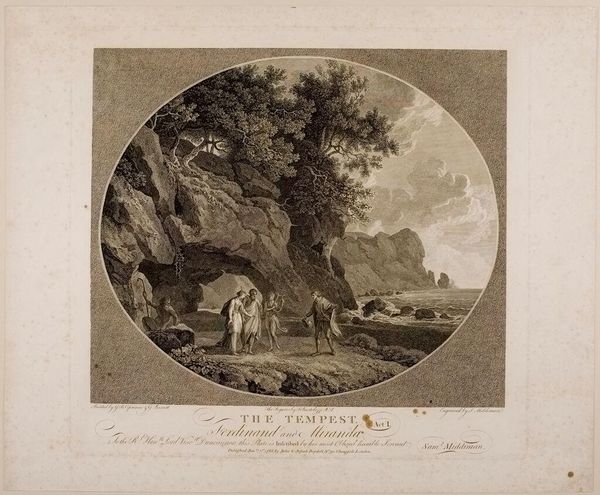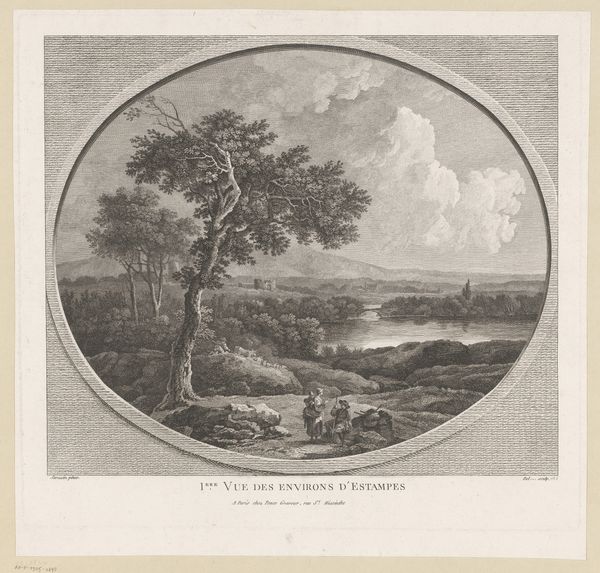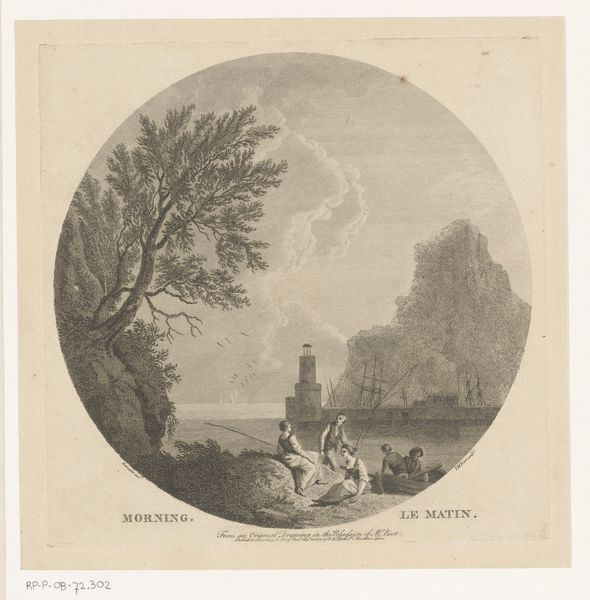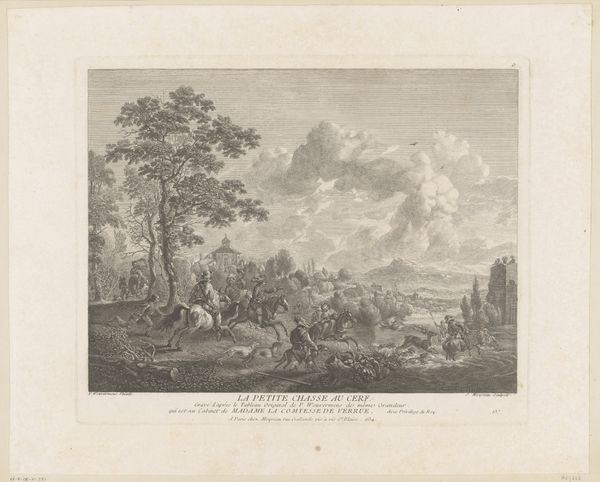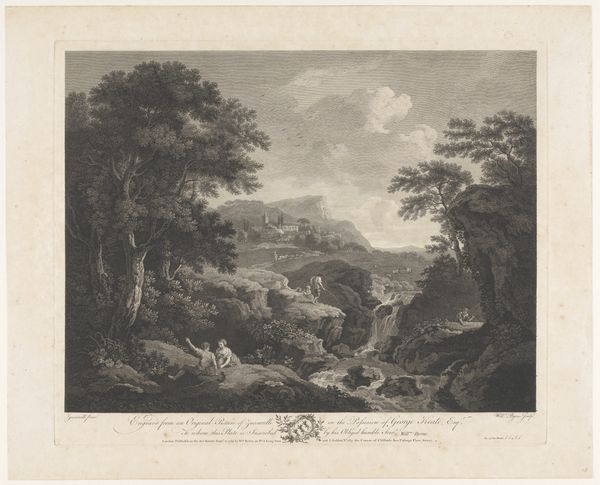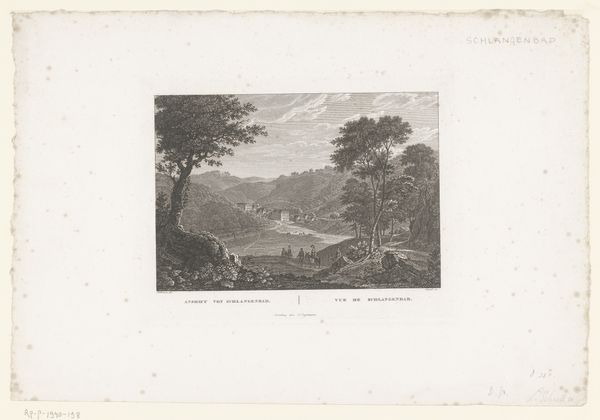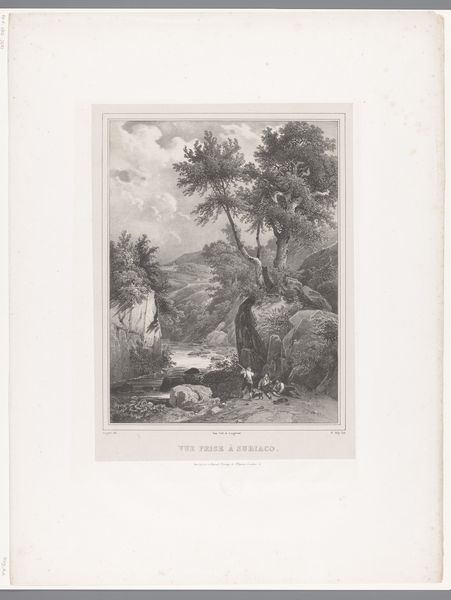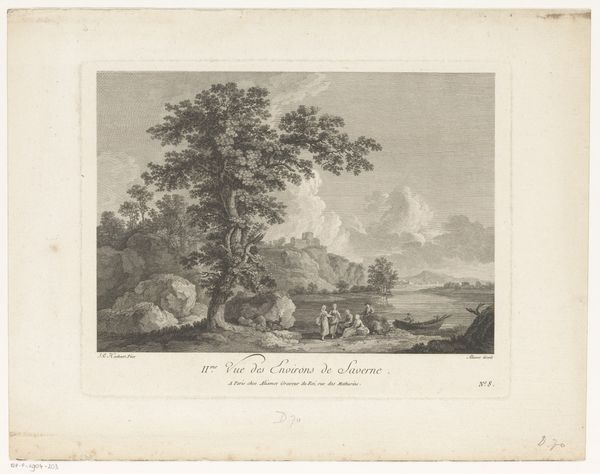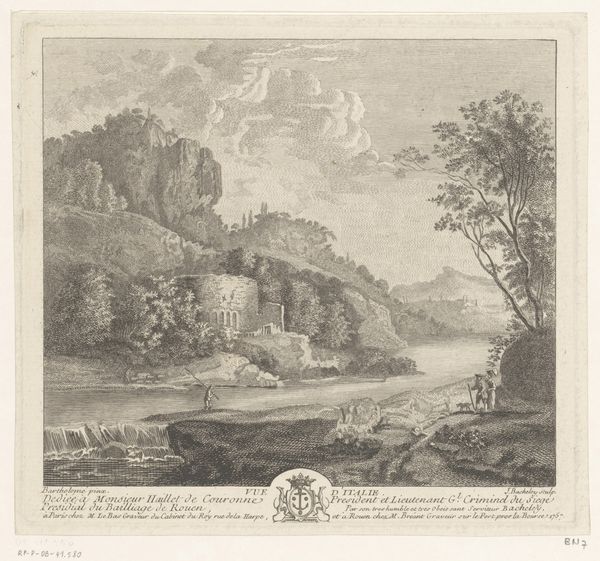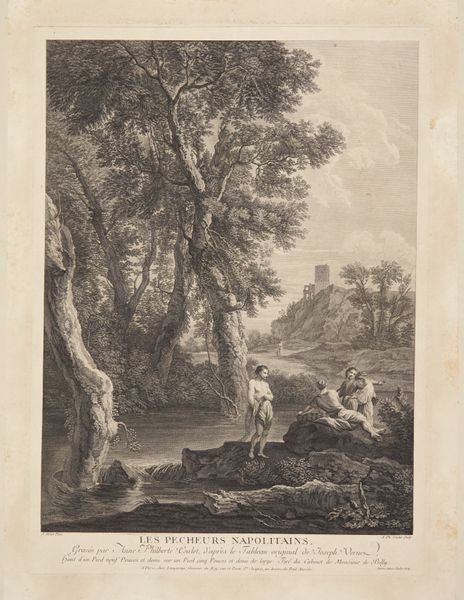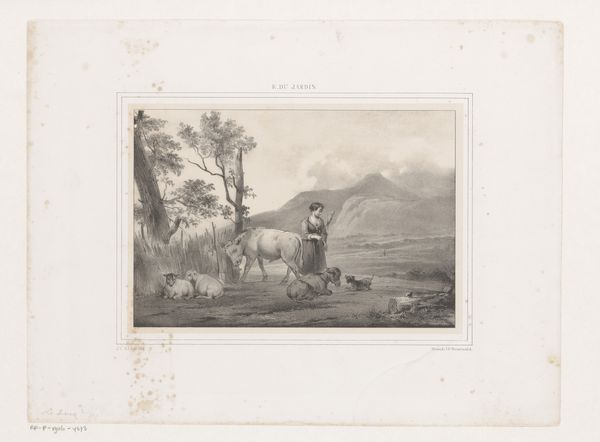
Dimensions: Plate: 13 15/16 × 14 15/16 in. (35.4 × 38 cm) Sheet: 15 3/4 × 19 5/16 in. (40 × 49 cm)
Copyright: Public Domain
Curator: Samuel Middiman's "The Tempest, Act I: Ferdinand and Miranda," created in 1788, captures a pivotal moment from Shakespeare’s play in finely rendered lines. It's currently held in the collection of the Metropolitan Museum of Art. Editor: The immediate thing that strikes me is the almost stage-like composition; the dark rocks frame the figures against the seascape, almost theatrical. I wonder about the materiality of prints and drawings during that time. What kind of paper and tools were employed to achieve this detail? Curator: Indeed, there’s a theatrical quality. But consider how the etching and engraving techniques were employed. Notice the contrasting dark grotto alongside the lightness around Miranda. Light here symbolizes innocence and discovery as we're guided from shadow to brightness. It creates a space heavy with symbolic meaning, mirroring the psychological intensity of first love. Editor: Absolutely, and I appreciate your point about symbolism. Looking closer, I am fascinated by the material process. What inks were available, and how did Middiman choose the appropriate weight and texture of paper to carry these minute etched lines, building up to this dramatic tonality? It’s labor-intensive. Curator: And the layering of meanings becomes embedded in that labour. It's not just about reproducing the scene; the artistic choices in line, shading, and the medium itself heighten the narrative weight. Think of how landscape in Romanticism reflects inner turmoil and emotional intensity. Miranda and Ferdinand exist at a pivotal moment where societal order and natural impulse collide. Editor: That Romantic sensibility you mention brings to mind questions about circulation and audience. How widely disseminated would a print like this have been? Was it a luxury item accessible only to the upper classes, or could it reach a wider audience to shape popular understandings of Shakespeare and its stories? The materiality suggests a market as well as aesthetic intention. Curator: It is fascinating to consider the intended viewership; to think about their aesthetic understanding and expectation of how virtue would be illustrated within that period's specific visual vernacular, especially the rising influence of staged drama represented in this print culture. Editor: Yes. It gives me so much to think about regarding the layers of production involved in shaping cultural ideals through the production and consumption of art. Curator: Exactly, and viewing art as material culture certainly enriches my understanding of its visual narratives.
Comments
No comments
Be the first to comment and join the conversation on the ultimate creative platform.
